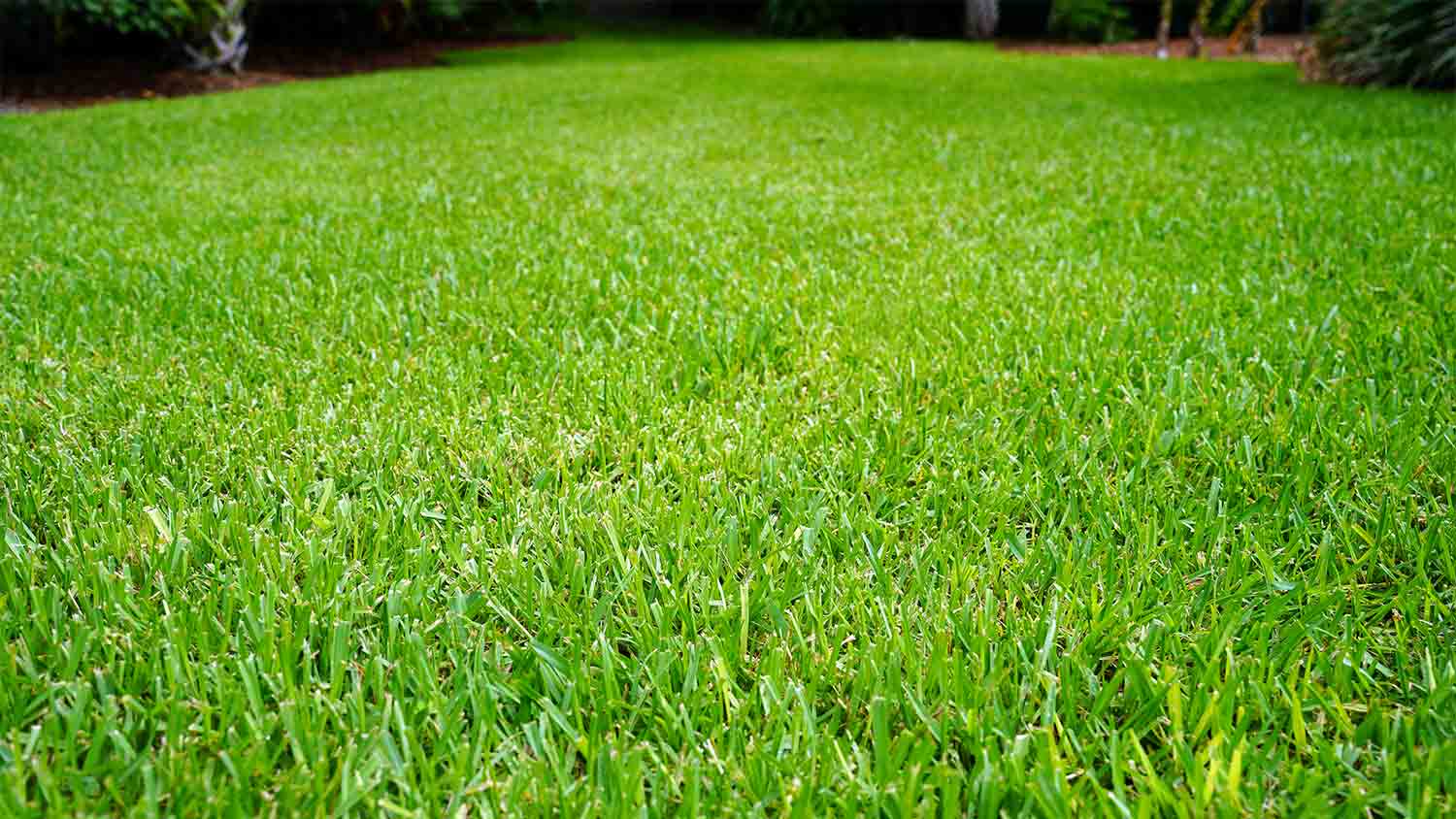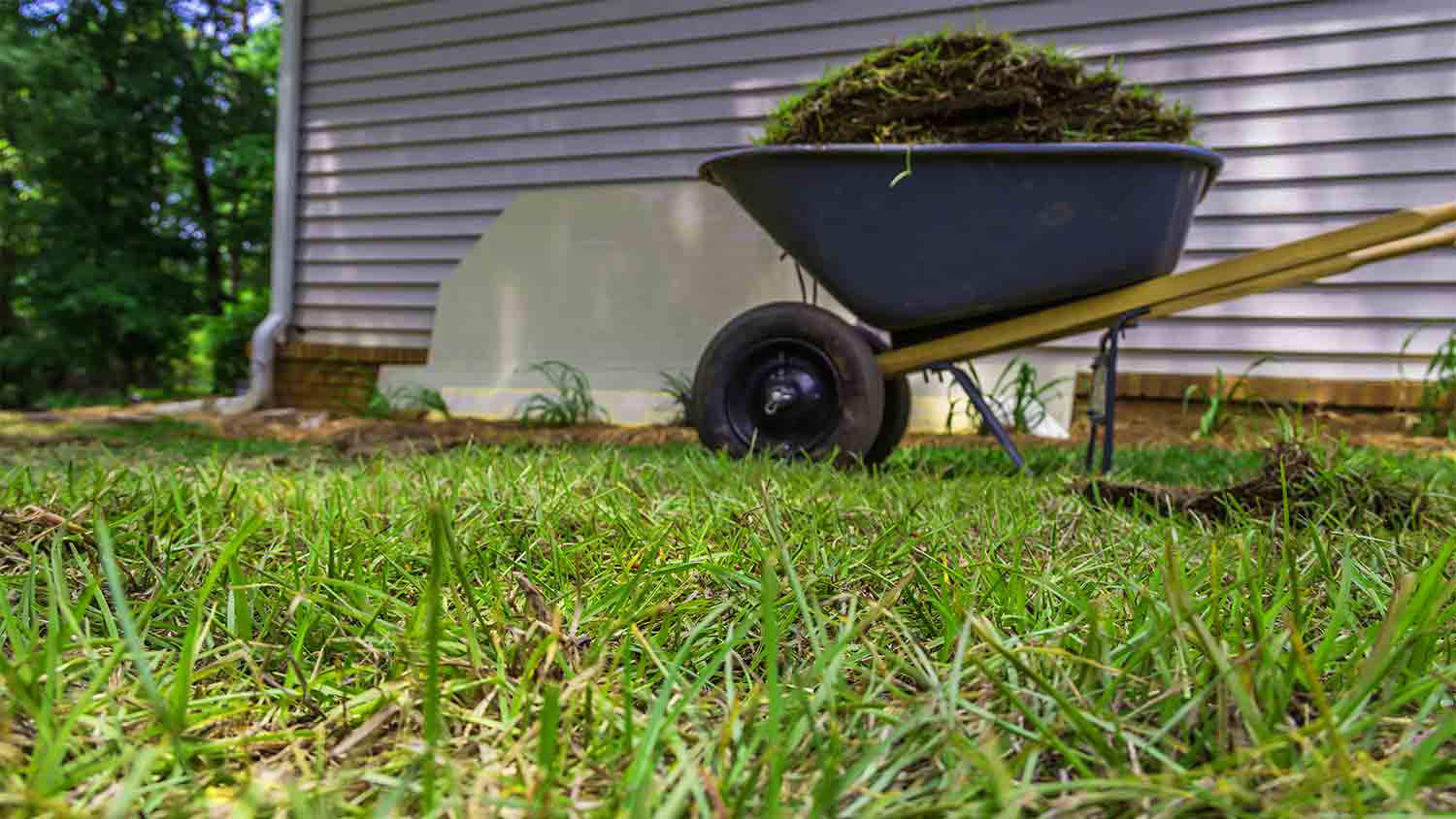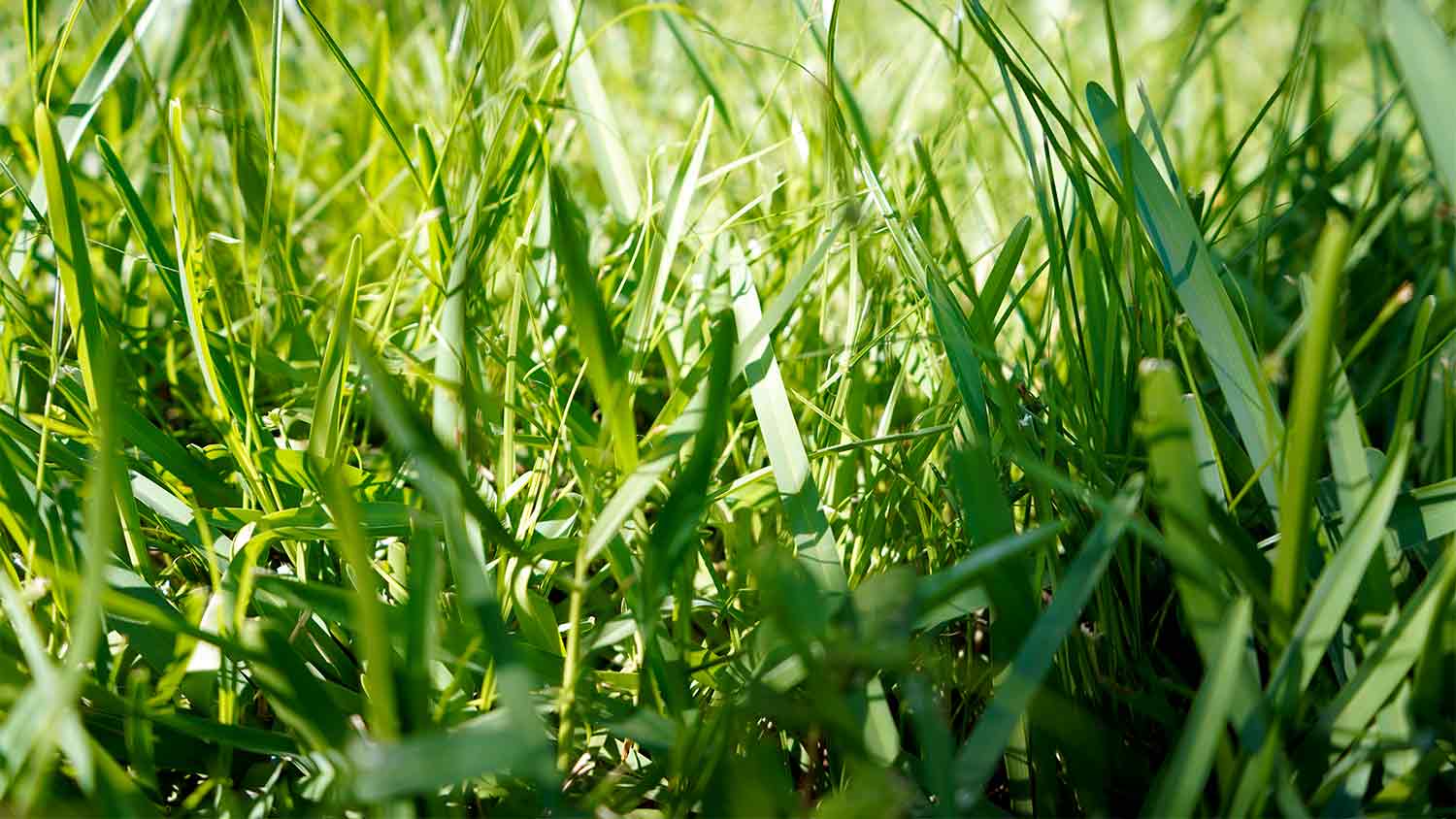
Your total lawn care cost depends on several factors, including the type of service and lawn size. Our guide will cover what you can expect to pay for lawn care.
The grass is always greener when you choose the right type of grass


Centipede grass is a popular southeast grass that needs plenty of sunlight.
St. Augustine grass is common in southeastern coastal regions.
Shady yards benefit the most from St. Augustine grass.
For a low-maintenance yard, centipede grass is a solid choice.
A lackluster, patchy yard can make for an eyesore. If you’re on the hunt for the best type of grass for your lawn, two grass species may have caught your eye: centipede grass vs. St. Augustine.
Both grass types thrive in warmer regions of the U.S., so if you’re wondering which one is best for your lawn, here’s everything you need to know to help you decide.

If you’ve ever walked barefoot across the grass in the South, there’s a chance you walked over centipede grass. Centipede grass, also called “the lazy man’s grass,” is a popular grass species for states ranging from North Carolina down and west across the south. It thrives in the heat, requiring six or more hours of full sun.
Though centipede grass originates from Southeast Asia, it quickly spread across the U.S. in the early 20th century and continues to be a staple choice for lawns today. If you need help deciding which grass option will work best in your yard, consider hiring a local lawn service to make a determination.
Sun tolerant
Heat tolerant
Slow-growing
Drought tolerant
Low maintenance
Low fertilizer requirements
Tolerates many soil types
Dense consistency
Weed resistant
Pest resistant
Disease resistant
Stays out of flower beds
No dormant season
Not ideal for shady areas
Poor cold tolerance
May turn brown during the winter
Susceptible to lawn thatching
High traffic may cause bare spots
Not a native species

St. Augustine grass, or carpetgrass, is a popular warm-season grass that grows across subtropical states in the southern U.S, ranging from North Carolina to Florida and across to coastal regions of Texas. It also grows in California and Nevada. This grass is native to southeastern and central parts of the U.S. and Central America.
St. Augustine grass thrives in full sun and shade, making it suitable for yards with varying levels of sunlight. Not to be confused with buffalo grass, St. Augustine grass now grows across the world in sunny, coastal regions like Africa and Australia, where it’s also called “buffalo turf” and “buffalo grass.”
Salt tolerant
Heat resistant
Tolerates sun and shade
Tolerates many soil types
Weed resistant
Turns green quickly after winter
Handles moderate foot traffic
Dense turf
Wide variety of cultivars
High long-term costs
High maintenance
Poor cold tolerance
Requires lots of fertilizer
Not drought tolerant
Unpleasant texture
Has a dormant season
Susceptible to overly wet conditions
Susceptible to insects
Low disease resistance
Weed resistant
High traffic may cause dead, brown patches
Pros and cons aside, it’s safe to say that centipede grass and St. Augustine grass have qualities that could make them the right fit for a home in a warm-season zone. That being said, depending on the grass, some properties stand out more than others. Here’s how these grass varieties compare to each other.
St. Augustine grass has identifiably broad and flat blades that range from dark, emerald green to bluer shades, depending on the variety. This grass has a dormant season when soil temperatures dip below 55 degrees, turning it yellowish and patchy in appearance.
Centipedegrass does not have a dormant season, so it will stay a bright, yellow-green year-round. Its blades are also narrower than St. Augustine grass.
Most visually attractive: Centipede grass
While centipede grass is more attractive, one of its downfalls is its susceptibility to foot traffic. If you have pets or children or enjoy doing outdoor activities in your yard, this grass may not hold up. Though St. Augustine grass can also experience damage from foot traffic, it has a higher resistance to wear and tear.
Most durable: St. Augustine grass

There’s a reason why centipede grass is also called “the lazy man’s” grass. Centipede grass is extremely low-maintenance. You don’t need to go out of your way to care for this grass species as it’s not susceptible to common lawn pests or diseases. Meanwhile, St. Augustine grass requires monthly fertilizer in the growing season if you have sandy soil, and it’s far more susceptible to pests and diseases.
Most easy to maintain: Centipede grass
St. Augustine grass costs around $0.55 per square foot or $250 per pallet. Centipede grass costs around $0.80 per square foot or $365 per pallet. However, remember that maintenance costs for St. Augustine grass may lead you to spend more in the long run than centipede grass.
Most cost-friendly upfront: St. Augustine
Both centipede grass and St. Augustine grass are popular warm-season grass species that require full sunlight. Centipede grass requires at least six hours of full sun, while St. Augustine grass needs at least four hours of full sunlight, but it can handle more.
Most sun tolerant: Tie

Of all the warm-season grasses, St. Augustine tops the charts as the most shade-tolerant grass. Since centipede grass needs six or more hours of full sunlight, this grass is not ideal for any shaded areas.
Most shade-tolerant: St. Augustine grass
While centipede grass doesn’t grow well in shady areas, it’s surprisingly more cold-tolerant than St. Augustine grass. Centipede grass can handle below-freezing temperatures, but extended temperatures at 20 degrees Fahrenheit or lower may kill your grass. St. Augustine grass, on the other hand, starts to die in temperatures below 25 degrees Fahrenheit, making it a hair more susceptible to cold damage.
Most cold-tolerant: Centipede grass
Centipedegrass requires minimal fertilizer and generally does not require pesticides, as it is not prone to pests or disease. However, St. Augustine grass requires regular fertilizer and pesticides, as it’s prone to disease and can be fussy in a nonideal environment. It is, however, a native plant to southern North America, unlike centipede grass.
Both types of grass, however, require plenty of water—roughly 1 inch of water weekly in the summer and 1 inch of water biweekly in the dormant season. St. Augustine grass can withstand drought conditions for up to six weeks before it begins to die, making it better for conserving water compared to centipede grass, which tends to die after two to three weeks without water.
Most eco-friendly: Centipede grass
Centipede grass and St. Augustine grass aren’t the only grass species for their respective climate zones. In fact, some grass species might be even better for your yard, depending on your personal preferences or region.
For example, some homeowners may choose an ornamental grass species for their yard to help promote biodiversity in their yards. Other homeowners might choose zoysia grass for its attractive emerald green appearance or bermuda grass for its disease resistance.
Here are several alternative grass species for warm season climate zones:
Bermuda grass
Bluegrass
Buffalo grass
Tall fescue grass
Zebra grass
Zoysia grass
From average costs to expert advice, get all the answers you need to get your job done.

Your total lawn care cost depends on several factors, including the type of service and lawn size. Our guide will cover what you can expect to pay for lawn care.

Artificial grass is a low-maintenance alternative to traditional turf. Learn how much artificial grass installation costs and what affects your price.

The cost to reseed a lawn can vary depending on the size of your yard and the condition of the soil. We’ll help you figure out the true cost of reseeding or overseeding your lawn, along with whether or not you should hire a professional.

A lush moss lawn can be a beautiful, low-maintenance green space that thrives in extreme conditions with little effort.

A step-by-step guide for dethatching your lawn if you have yellow or brown grass caused by thick debris and organic matter in your yard.

Orchard grass control can make you feel like you're going in circles. Here are all the ways to get rid of orchard grass with or without chemicals.